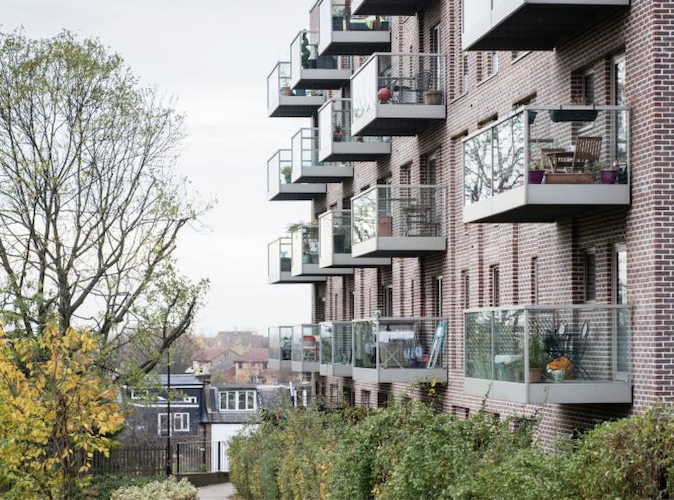After some two years of drafts and consultations and 12 weeks’ worth of planning inspectorate hearings, the London Plan process is edging towards its endgame – and a possible Whitehall intervention over Mayor Khan’s 65,000 a year housebuilding target.
Currently running to a hefty 450 pages, the Plan is the capital’s planning blueprint, setting out policies which must be taken into account when planning decisions are taken at borough level. As Mayor Khan says in his foreword to his draft new version of it, the Plan shapes Londoners’ lives “on a daily basis”.
The inspectors’ findings will arrive at City Hall very shortly, and their verdict is key to the prospects for Khan’s housebuilding target, an ambitious 57 per cent uplift on Boris Johnson’s of 42,000 a year.
It would mean roughly doubling the current rate of home building on the larger sites generally already identified, but also via a new emphasis on “intensification” and pushing development on small sites across the city to deliver some 18,000 homes a year on them, five times current output.
And all this within the capital’s boundaries without encroaching on the Green Belt or other protected green space and with no net loss of designated industrial floorspace, the plan says.
The 65,000 target has been under fire at the public hearings on the Plan, from housebuilders wanting less restrictive policies, from boroughs challenging their small site targets and the Green Belt rules and from agencies calling for collaboration with boroughs outside London to meet demand as well as from academic observers, including the London School of Economics.
The LSE has even gone so far as to describe the target as “pure fantasy” in the absence of clear plans to turn potential capacity into delivery, reliance on infrastructure as yet unbuilt and a refusal to review Green Belt designation or work with boroughs outside London on additional supply. Full details of the LSE’s London Plan analysis are here.
And the planning inspectors may be about to agree. “The inspectors have considered that the target set by the Mayor is likely undeliverable (in part due to the small sites strategy) and as such have recommended that this is reduced to 52,000 homes a year”, according to a leaked note revealed by the Evening Standard last month.
At the same time, national government has questioned whether Khan’s plan goes far enough, welcoming the 65,000 target as merely “a helpful first step towards meeting London’s housing needs”. Southwark Council leader Peter John has also queried the target, calling for a “fundamental relook” at the Green Belt.
Under planning law, the inspectors have four options: accept the Plan; approve it with proposed amendments, which the Mayor is not obliged to accept; reject it, leaving the current Plan in place and effectively sending Khan back to the drawing board; or approve it subject to a review of key elements, which could include the housebuilding target.
It was that fourth option which was taken by the inspector assessing Johnson’s 2015 London Plan, ruling that it would “not deliver sufficient homes to meet objectively assessed need” – a conclusion which set the present Plan-making process in train.
And it’s the outcome hinted at last year in a letter to Mayor Khan from then communities secretary James Brokenshire, reminding City Hall that Whitehall has the final say. If an “early review” of the targets in the Plan was not forthcoming, he wrote, “I have powers to direct the review to ensure London delivers the Plan and homes that communities need”.
Does all this matter, given that housebuilding targets both in London and nationally are generally more honoured in the breach than the observance?
At best, the LSE warns, chasing undeliverable targets sets up a continual “blame game” – the GLA blaming the boroughs and the government blaming the GLA. Failing to tackle constraints on supply could also fuel land value inflation, while target chasing could lead to poor decision-making at borough level, according to LSE Professor Ian Gordon.
Aspirational targets may nevertheless prompt reluctant boroughs into housebuilding action and change the political dynamics more generally – particularly, for Khan, in favour of the step change in affordable housing supply, which is central to his new Plan.
The Mayor has already won more cash from Whitehall for council housing and continues to lobby for more government investment, both for housing and for transport infrastructure. Transport for London this week launched a consultation on a £3 billion Bakerloo Line expansion to Lewisham and possibly beyond into Bromley, alongside a call for government funding for the scheme from local councils, developers and business organisation London First. The scheme could support development of up to 100,000 new homes.
“Sadiq makes no apologies at all for his ambitious plans to build new homes for Londoners – particularly new council homes,” the Mayor’s office said, responding to the inspectors’ apparent concerns on deliverability. “It is deeply disappointing that the government does not share Sadiq’s ambition on housing – and are still refusing to properly fund affordable housing in London.”
City Hall confirmed this week its intention to make the final version of the Plan public and submit it for sign-off to the London Assembly and the secretary of state at the same time as publishing the inspectors’ report. The Plan is scheduled to come into force in February or March next year.
Image from GLA Draft New London Plan page.
OnLondon.co.uk is dedicated to providing fair, thorough, anti-populist coverage of London’s politics, development and culture. It depends on donations from readers and would like to pay its freelance contributors better. Can you spare £5 (or more) a month? Follow this link to donate. Thank you.

